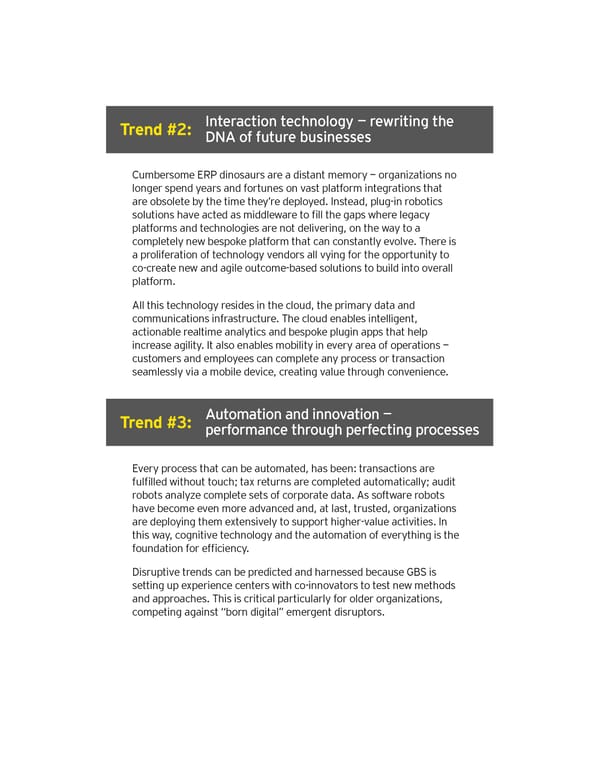Trend #2: Interaction technology — rewriting the DNA of future businesses Cumbersome ERP dinosaurs are a distant memory — organizations no longer spend years and fortunes on vast platform integrations that are obsolete by the time they’re deployed. Instead, plug-in robotics solutions have acted as middleware to fill the gaps where legacy platforms and technologies are not delivering, on the way to a completely new bespoke platform that can constantly evolve. There is a proliferation of technology vendors all vying for the opportunity to co-create new and agile outcome-based solutions to build into overall platform. All this technology resides in the cloud, the primary data and communications infrastructure. The cloud enables intelligent, actionable realtime analytics and bespoke plugin apps that help increase agility. It also enables mobility in every area of operations — customers and employees can complete any process or transaction seamlessly via a mobile device, creating value through convenience. Trend #3: Automation and innovation — performance through perfecting processes Every process that can be automated, has been: transactions are fulfilled without touch; tax returns are completed automatically; audit robots analyze complete sets of corporate data. As software robots have become even more advanced and, at last, trusted, organizations are deploying them extensively to support higher-value activities. In this way, cognitive technology and the automation of everything is the foundation for efficiency. Disruptive trends can be predicted and harnessed because GBS is setting up experience centers with co-innovators to test new methods and approaches. This is critical particularly for older organizations, competing against “born digital” emergent disruptors. SS_Dublin_infographic.indd 4 23/05/2016 12:39:18
 How can the Digitalized, Agile Organization of the Future still be Rooted in Human Values Page 3 Page 5
How can the Digitalized, Agile Organization of the Future still be Rooted in Human Values Page 3 Page 5